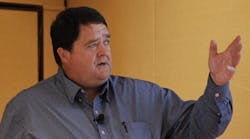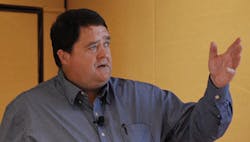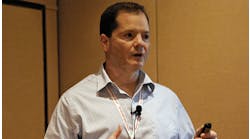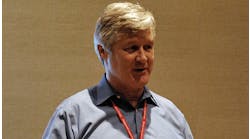Alcoa puts its best foot out front with MES migration
“We had an MES, but there were new features to add to make our people happy. It wasn’t a copy and paste.” Alcoa’s Geff Wood explains the worthwhile effort of his company’s QUASAR modernization at the Honeywell Users Group (HUG) Americas 2022 conference.
When most people think aluminum, they think Alcoa. The 130-year-old company invented the aluminum industry and is still the world’s largest producer of bauxite, the versatile metal’s main source.
In 2016, the company was split into two entities, Arconic, which engineered products for aerospace and automotive, and Alcoa Corp., which has continued its focus on bauxite, aluminum and alumina, the starting material for aluminum smelting.
“We are the upstream aluminum company,” explained Geff Wood, director of automation and operations solutions at Alcoa, who spoke at the Honeywell Users Group (HUG) Americas 2022 this week in Orlando, Florida. “In our new company, it was important to lay out our vision and reinvent the aluminum industry. It’s one thing to make it cheap, but we wanted to make it green and sustainably. We wanted to reduce complexity, drive returns and advance sustainability.”
With around 12,000 employees at 29 sites in nine countries on six continents, Alcoa is divided into three global business segments—bauxite, alumina and aluminum—and is the world’s only low-carbon alumina brand, said Wood.
An aging manufacturing execution system (MES) and the drive to create something new spurred Alcoa to partner with Honeywell on a system to meet its specific needs.
“We have seven operating refineries, and we now have the same reliable and secure system in all of them,” explained Wood. “When we set off to do the MES, we wanted to identify the workflow and goals. It was a multiple-stage journey to put MES in our plants above the controls. We’d tried this many times in the past, but we finally found a solution that worked.”
That solution is Quality Automation Solutions for Alumina Refining (QUASAR), led by a group of 20 individuals—12 from Alcoa and eight from Honeywell. “The people on our team don’t say they work for Alcoa or Honeywell. They say they work on the QUASAR Program,” noted Wood.
While the QUASAR implementation was recent, the Alcoa MES journey began in 2000 with a redundant and outdated mainframe. It wasn’t until 2010 when the software that became the Honeywell Forge Enterprise Data Management (EDM) Process History Database (PHD) module was implemented. The Forge EDM suite had become a critical part of the operation, so migration of the legacy data was one of the strategic priorities with the new MES.
Other important and desired features included an alumina data model to get more value from existing data through context, subscriptions for different roles to access content and self-service content creation, as well as a responsive system that worked remotely and on mobile devices.
“We had an MES, but there were new features to add to make our people happy. It wasn’t a copy and paste,” admitted Wood. “We brought our workflow experts and talked about what we wanted to do, and we mapped things out step by step.”
In 2020, Honeywell’s latest MES platform wasn’t even a current product. At the time, it was still unreleased. “We wanted to go as far out on the front foot as we could,” explained Wood. “In both migrations, we took change management seriously. In the second one, we let users know we were using a beta product.”
A collaborative development process and a project punch list of more than 600 items added to the challenge. “We made a roadmap with each rollout for fixing and patching, and we continued to narrow it down,” explained Wood. “The key was having a good team that understood the development cycle. Even if we had to patch it, we knew the fix was coming, and we were able to remove the patches when it did.”
Training was going to be challenging, as well. “We were deep into the pandemic, so we were missing a lot of people,” Wood said. “We made the training self-guided and tied it into our learning management system. We focused on short point lessons and made 50 videos available on Microsoft Stream, including channels with Spanish and Portuguese translations.”
The entire project was very workflow-driven, explained Wood. “There was a use case behind everything we developed,” he said. “The search engine that came with the product wasn’t as nice as we wanted, so we did some enhancements. Now if process engineers want to trend something they are able to find it in a few searches.”
The editors of Control, Control Design and Smart Industry are reporting live from 2022 Honeywell Users Group in Orlando, Florida, to bring you the latest news and insights from the event. When the event comes to a close, the best, most important coverage will be compiled into a report by the editors.
Register now to pre-order the report and be among the first to receive it in your inbox.





